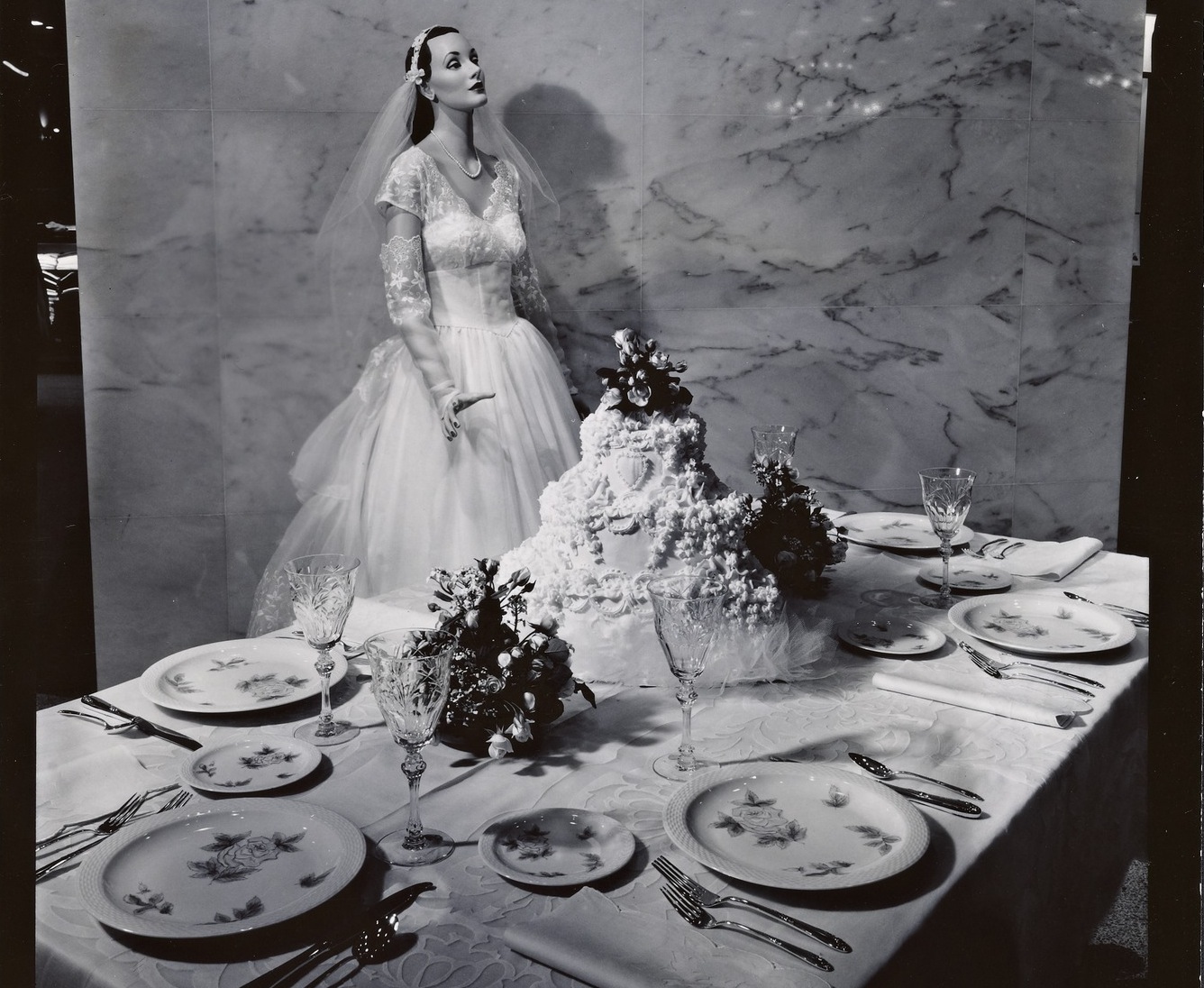【720p Archives】
20p ArchivesRise of the Tablescape, and Other News
On the Shelf

From a display of outdoor patio furniture and table settings at Pereira & Luckman, Beverly Hills, California, 1953. Photo: Julius Shulman
- Tim Parks on reading and the senses: “We have a vested interest in supposing that we are capable of projecting a kind of continuous movie of the events in a novel … The problem is that upon close examination the reading experience is far more complex and far less visual than is commonly supposed … So what do we see when we read? First the page, of course, and the words printed on it. No ‘image’ we have of the characters or settings will ever be as concrete, as indisputably and continuously present, as the solid book … ”
- Pedro Martinez’s new autobiography reveals, at last, a field-tested secret to beating performance anxiety: “Early on, when I was in the minor leagues and measuring the opposing batter, I would conjure up a scene straight out of the most gruesome Hollywood blood-and-gore slasher flick: my mother, strapped tightly by ropes to a chair, her mouth gagged, her eyes clenched shut, too terrified to look down at the tip of a knife held to her throat by the leader of a gang of kidnappers.”
- Today, in pleas from academia: Can’t we stop conferring, already? Haven’t we had enough of this masquerade? “Conferences feel necessary, but their purpose is unclear. They have great potential to help revitalize the humanities, but have not yet lived up to this potential.”
- Other than perennial favorites—your John Dowells and Holden Caulfields, anyone from Joyce or Nabokov—who are the greatest unreliable narrators? Look to Henry James, for starters, and “give up pretending there weren’t unreliable narrators before 1940”: “The Sacred Fountis his least read major novel, and certainly his oddest. The narrator spends the entire book concocting elaborate deductions about fellow partygoers based on next to no evidence.”
- If “a dining table was once a simple, knockdown affair,” how did we end up with profligate place settings, glutted with silverware, centerpieces, and candelabras? A history of tablescapes finds that “improved manufacturing technologies led to a boom in utensils and flatware. Elite European tables have displayed silver dishware since the Middle Ages, but the variety of dishes for holding food continually increased, as they became more specific and more ornate. This trend peaked in the Victorian Era, when an abundance of silver, glass, and porcelain contributed to the table’s shiny new look, with about twenty pieces per place setting.”





Related Articles